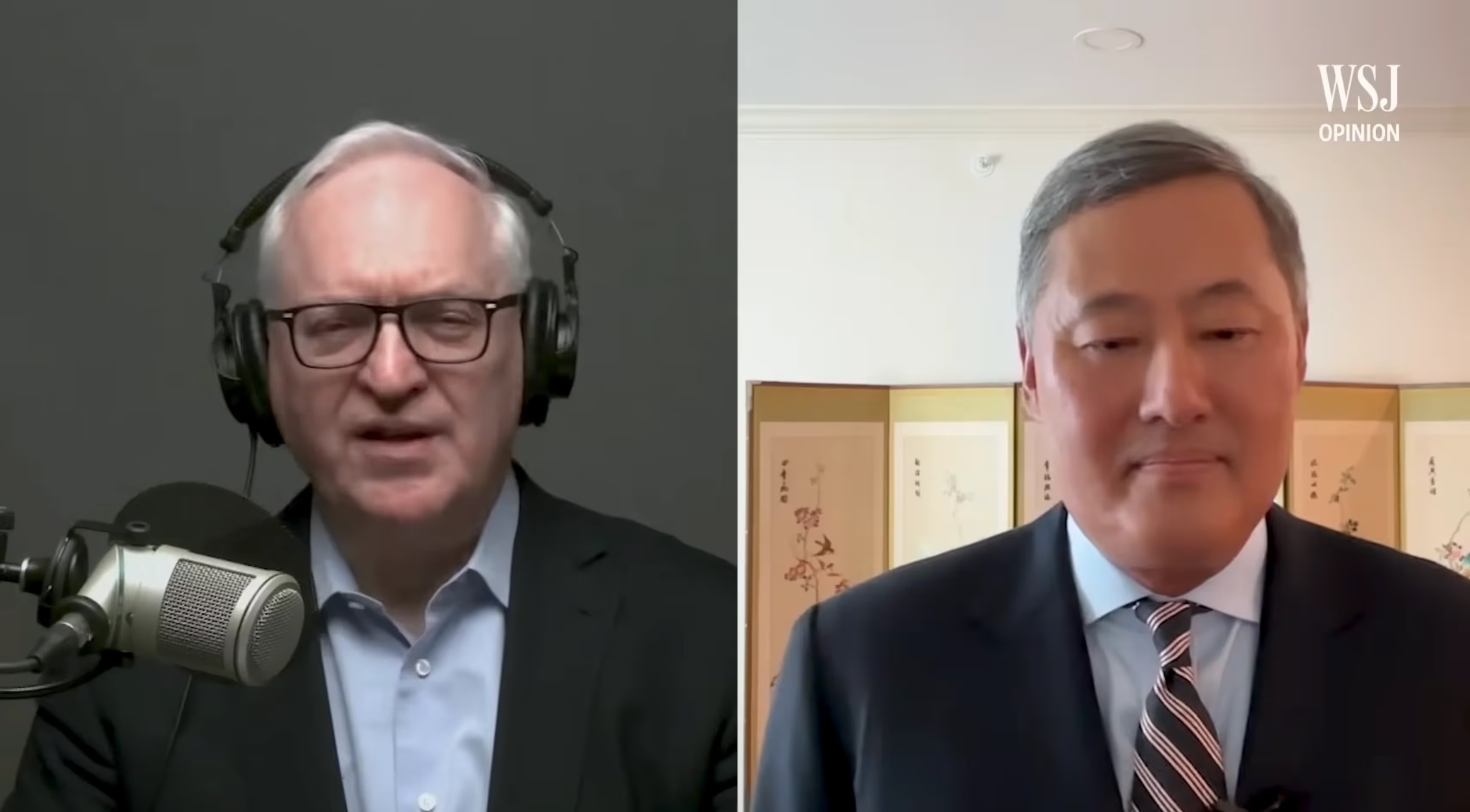
That Elusive Gaza Solution
Everyone is in favor of a ceasefire of sorts, but on whose terms?
The many newspaper reports as of this writing are abuzz with hopeful signs of a release of the Israelis, long held hostage, followed by the disbanding of Hamas as an official organization. Israel announced itself ready to move forward with the first step of the deal, which at one time had an explicit end date of October 5, 2025. That day has come and gone, allowing for further negotiations in Cairo. Hamas wants to revisit the final terms, having apparently accepted the basic structure. Yet the hard question remains what it has been since the beginning. Everyone is in favor of a ceasefire of sorts, but on whose terms? Hamas, at one time, was prepared to agree to a ceasefire if matters reverted to the situation on October 6, 2025, the day before its attack. With an Israeli withdrawal today, Hamas’ battered survival would count as a victory, even if Hamas is left with a markedly diminished power to inflict organized mayhem on Israel, at least in the short-run. But for Israel, unconditional surrender and the removal of Hamas is nonnegotiable, because it does not wish to sit on tenterhooks, knowing that its citizens could face yet another Hamas attack, perhaps in a year, perhaps in a decade. So with end points so disparate, is it correct to think that the two sides will be able to go the last mile, notwithstanding their protestations to the contrary? Are any Hamas-added conditions ones that Israel will be prepared to accept? Or has the logjam been broken once and for all?
Give the Trump administration top marks for putting together the only deal that might work, with its 20-point proposal. Give Netanyahu full credit for not heeding the unwise advice of the Biden administration in April 2024 — “take the win” — after the Israelis had successfully resisted the missile and drone barrage from Iran. That advice rested on Biden’s misguided premise that any escalation on one side would be met by a similar response on the other: tit for tat. That result might have been true if Israel’s incremental response had been small. But the great fallacy of Biden’s position was to fail to envision a situation where the new Israeli response was powerful enough to take militarily a proportionate escalation out of the hands of Israel’s sworn enemies. But that was precisely what Israel did by devastating both Iran’s military and scientific leadership and material support. The flawed Biden approach, therefore, sought to preserve an illusory parity, which was the one way to guarantee the long-term prosecution of a war of attrition that necessarily favored Israel’s enemies.
Such a protracted conflict never materialized. The Israelis launched calculated ruses and strikes that took out Hezbollah’s arms and leadership and neutralized much of Iranian military power, while occupying key defensive areas of Syria near the Golan Heights. The decision of the Trump administration to take out the Iranian nuclear sites was also so decisive that Iran was utterly unable to mount any form of counterattack. The radical change in these conditions on the ground vindicated the decisive rejection of the Biden' go-slow' policy, which was the necessary precondition for getting this far. Any risks to Israel from a recrudescent Hamas have been much reduced, even if that organization somehow manages to reconstitute itself in disguise after this agreement is in place. Note, too, that Hamas has a strong brand name, whose benefit is lost if its remnants try to work under a new and untested banner.
More than that, the momentum has changed. There is still a dominant sentiment on the part of too many European nations that Israel has engaged in a form of genocide in its response to the attacks of October 7, 2023, even with, as John Spencer has repeatedly shown, a concerted effort to avoid the civilian casualties that Hamas used as shields for its own extensive activities. Regardless, however unforgivable those previous excesses may be, the key point on the ground today is that these same harshly critical nations have thrown their support behind the short-term deal that shuts down the war and returns the hostages. The Israelis had to swallow a bitter pill by agreeing to release 250 life sentence prisoners plus 1,700 Gazans who were detained after October 7, 2023, including all women and children detained in that context. For every Israeli hostage whose remains are released, Israel will release the remains of 15 deceased Gazans.
The disproportionate numbers are a recurrent feature of all prisoner swaps, but in this instance the disparity is less fatal than that under a disastrous 2011 deal, under which the Israelis secured the release of Gilad Shalit in exchange for the release of 1,027 Palestinian and Arab Israelis — including Yahya Sinwar, who languished in Israeli jails from 1988 to 2011, only thereafter to organize and lead the October 7, 2023, attacks until his death on October 16, 2024. The risk of a similar mistake is mitigated today by two factors. First, there will be no Hamas organization left, and second, the timing of that second round of release by Israel is not specified in the agreement, so that a pause or some sort is always possible.
I think the odds of a belated disruption of negotiations are low because the many third parties who have invested in the deal would be loath to see that breakdown happen. The most likely reason why Hamas will cave in some form is that the deal has left it politically isolated at home and abroad. There is evidently much sentiment in Gaza in support of the deal by residents, whose lives have been torn apart by the conflict, for which, until now, there was no apparent end. Their theme is, enough is enough, backed by a deep disappointment with Hamas’ arrogance and isolation. These sentiments cannot be ignored, because these residents can expose Hamas elements to Israel or take them out themselves. The position of Hamas is further compromised because the European Union has now stated its support for “a demilitarised Hamas with no role in future governance, the removal of any threat to Israel and its people, that Gaza will not be occupied and that Palestinians will not be displaced,” and its desire to “pave the way for lasting and sustainable peace through a credible pathway towards a political horizon for Palestinian statehood and the two-state solution, based on the principles endorsed by a large majority of UN Member States.”
At this point, the crystal ball goes hazy. Of necessity, there can be no definitive timeline for the release of the Arab prisoners, but only the creation of commissions to analyze the issue to determine how that future will play out. The sensible approach, as the Trump plan notes, is to start reconstruction soon, long before any political solution can be worked out under the ostensible leadership of Trump and Great Britain’s Keir Starmer, a man whose instincts tend toward the middle. The exact form of the new government is unclear, but the agreement in Clause 13 contemplates shutting down the tunnels, destroying weaponry, and similar measures. I think that the pledges should include a notion that the two-state solution requires a complete demilitarization of Gaza that could be enforced, if necessary, by Israel, which will retain, at least for the foreseeable future, “security perimeter presence that will remain until Gaza is properly secure from any resurgent terror threat.” In effect what follows, but not in those words, is the only solution that has any change of working — a Palestinian enclave: The Israeli forces on the border prevent external rearmament of Gaza (by building a wall?) while the Palestinians get the benefit of their own police force and internal self-rule, which spares the Israelis the high costs of seeking to impose foreign rule. This leaves open the possibility, under paragraph 11, that some free trade in both goods and services could resume after being shattered on October 7.
There will be many sticking points along the way, but for the deal to work, there must be no uncorrected incidents of death and sabotage operations. But the Israelis stand to gain much by adhering to all the key terms of this arrangement. It is hard to constantly accuse the nation that has made negotiated concessions of being a genocidal state, so there is reason to believe that there will be at least some abatement of the inflammatory rhetoric that has branded Israel as a pariah state in the eyes of too many people. Similarly, it is harder today to condemn Netanyahu as a desperado whose sole interest is to prolong the war to save himself from political disgrace and criminal punishments at home. Indeed, at this point, it will no longer be feasible for Hamas to say a flat no to this and every other deal on the ground that Israel should be in the dock, not Hamas. Instead, if Hamas backs out, it will stand naked against the rest of the world, for it well understands the explicit Trump statement that all hell will break loose if the deal is turned down. And so this strange confluence of forces may yet do what all other Middle Eastern deals fail to succeed in doing now that it is indisputable that the long road to peace lies through the decisive Israeli wins that seemed ever so unlikely on the morning of October 8, 2023.
Richard A. Epstein is a senior research fellow at the Civitas Institute. He is also the inaugural Laurence A. Tisch Professor of Law at NYU School of Law, where he serves as a Director of the Classical Liberal Institute, which he helped found in 2013.
Politics
.webp)
Liberal Democracy Reexamined: Leo Strauss on Alexis de Tocqueville
This article explores Leo Strauss’s thoughts on Alexis de Tocqueville in his 1954 “Natural Right” course transcript.
%20(1).avif)
Long Distance Migration as a Two-Step Sorting Process: The Resettlement of Californians in Texas
Here we press the question of whether the well-documented stream of migrants relocating from California to Texas has been sufficient to alter the political complexion of the destination state.
%20(3).avif)
Who's That Knocking? A Study of the Strategic Choices Facing Large-Scale Grassroots Canvassing Efforts
Although there is a consensus that personalized forms of campaign outreach are more likely to be effective at either mobilizing or even persuading voters, there remains uncertainty about how campaigns should implement get-out-the-vote (GOTV) programs, especially at a truly expansive scale.

Decadent Ideology, Decaying Fraternity
Richard Reinsch reviews Prosperity and Torment in France by Chantal Delsol.

DC and LA Failures Play Into Trump’s Hands
Although clearly violating America’s long-standing federalist principles, Trump’s incursions are being justified by the incompetence of most blue-city leaders.

Is This Nixon Redux?
While the parallels between the Nixon and Trump presidencies might seem striking, there are critical differences that should not be ignored.

The Persistent Populism of Trump and Mamdani
Populism gives Trump room to survive his regulatory blunders; Mamdani, lacking that populist cushion, may stumble before day one.
.avif)



.avif)









